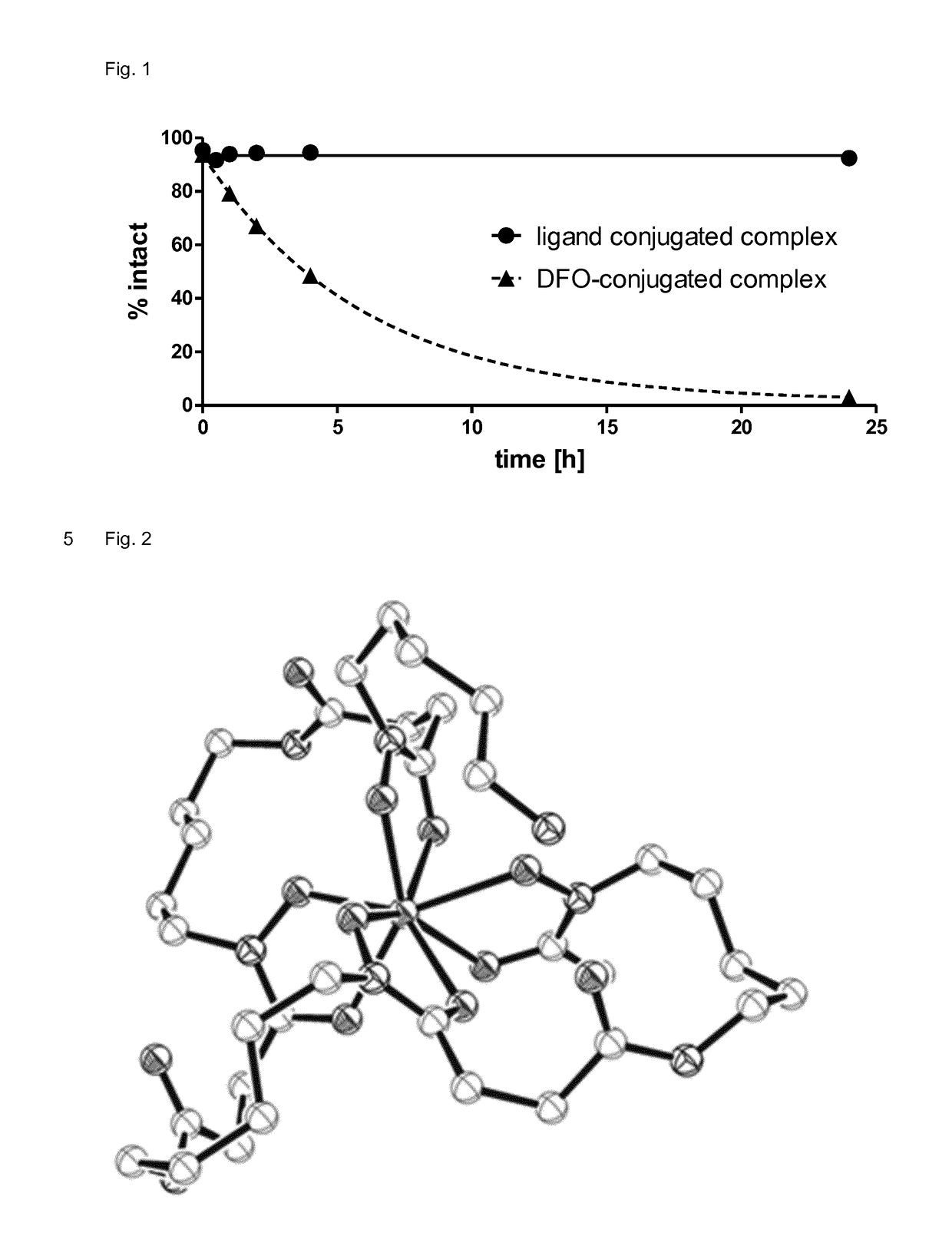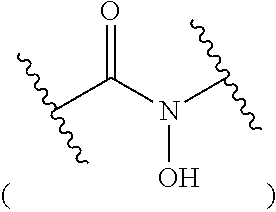Multidentate bifunctional chelating agents for radionuclide complexation in diagnostics and therapy
a radionuclide complex and multidentate bifunctional technology, applied in the direction of peptides, drug compositions, organic chemistry, etc., can solve the problems of unfavourable stability of the complex in vivo, and the inability to specificize the radioactivity in vivo, and achieve the effect of reducing the risk of sup>
- Summary
- Abstract
- Description
- Claims
- Application Information
AI Technical Summary
Benefits of technology
Problems solved by technology
Method used
Image
Examples
examples
a. Synthesis of compound a (4-[benzyloxy-[5-(benzyloxycarbonylamino)pentyl]amino]-4-oxo-butanoic acid) was synthesised following the procedures described in Na. Chem. Biol., 2007, 3, 652-656, and Na. Chem. Biol., 2007, 3, 652-656
[0167]
t-butyl N-benzyloxy-N-[5-(benzyloxycarbonylamino)pentyl]carbamate
[0168]
b. Synthesis of Compound b [(benzyl N-[5-[[4-[5-[[4-[5-[[4-[5-[acetyl(hydroxy)amino]pentylamino]-4-oxo-butanoyl]-hydroxy-amino]pentylamino]-4-oxo-butanoyl]-hydroxy-amino]pentylamino]-4-oxo-butanoyl]-benzyloxy-amino]pentyl]carbamate)]
[0169]To a stirred solution of carboxylic acid (1.13 g, 2.6 mmol), addition of HATU (1.46 g, 3.8 mmol) in DMF (10 mL), and DIPEA (0.66 g, 5.1 mmol) was carried out under N2 atmosphere. After stirring the mixture for 40 min at room temperature, deferoxamine mesylate salt (1.68 g, 2.6 mmol) followed by DIPEA (0.66 g, 5.1 mmol) and 4-methyl morpholine (2 mL) were added. The mixture was then stirred for 48 h at room temperature. The solvent was removed using...
PUM
| Property | Measurement | Unit |
|---|---|---|
| positron emission tomography | aaaaa | aaaaa |
| metallic | aaaaa | aaaaa |
| PET | aaaaa | aaaaa |
Abstract
Description
Claims
Application Information
 Login to View More
Login to View More - R&D
- Intellectual Property
- Life Sciences
- Materials
- Tech Scout
- Unparalleled Data Quality
- Higher Quality Content
- 60% Fewer Hallucinations
Browse by: Latest US Patents, China's latest patents, Technical Efficacy Thesaurus, Application Domain, Technology Topic, Popular Technical Reports.
© 2025 PatSnap. All rights reserved.Legal|Privacy policy|Modern Slavery Act Transparency Statement|Sitemap|About US| Contact US: help@patsnap.com



